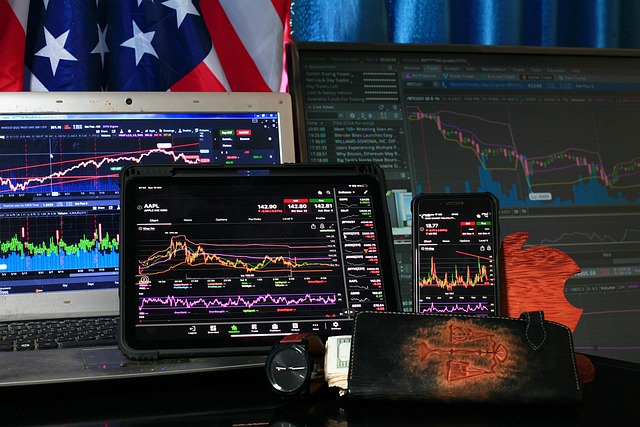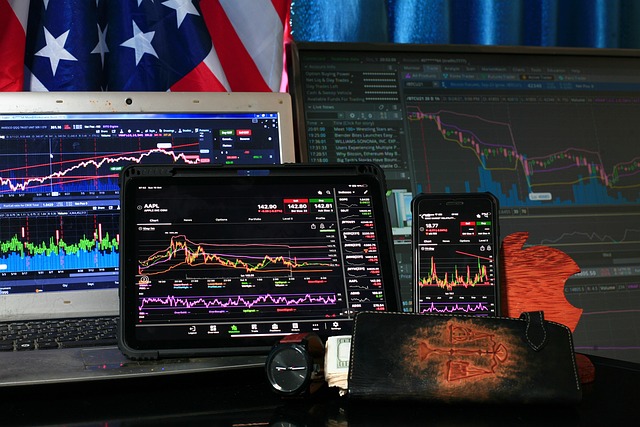Does Crypto Follow Day Trading Rules in 2025? An In-Depth Analysis
Author: Jameson Richman Expert
Published On: 2025-08-18
Prepared by Jameson Richman and our team of experts with over a decade of experience in cryptocurrency and digital asset analysis. Learn more about us.
Crypto trading has cemented its position as a cornerstone of the modern financial landscape, attracting a broad spectrum of participants—from individual retail traders seeking quick gains to institutional giants managing large portfolios. As we navigate through 2025, a pivotal inquiry emerges: does the crypto market adhere to the well-established day trading rules that govern traditional securities markets? These regulations—encompassing minimum capital requirements, pattern day trader (PDT) restrictions, leverage limitations, and transparency mandates—serve to promote market stability, fairness, and investor protection. However, the inherently decentralized, highly volatile, and globally fragmented nature of crypto markets challenges the direct application and enforcement of such standards. This comprehensive analysis explores the current regulatory environment, operational realities of crypto day trading, and strategic considerations essential for traders operating in this complex realm in 2025.

Introduction: Comparing Conventional Day Trading Regulations with Crypto Market Dynamics
Conventional day trading regulations are deeply rooted in well-established financial frameworks. In the United States, for instance, the FINRA and SEC enforce the Pattern Day Trader (PDT) rule, which stipulates that traders executing four or more day trades within five business days must maintain a minimum equity balance of $25,000 in their margin accounts. Such regulations aim to curb excessive speculation, prevent systemic destabilization, and shield less experienced investors from over-leverage. They often incorporate leverage caps, detailed reporting standards, anti-manipulation measures, and mandatory disclosures—creating a structured environment conducive to orderly market activity.
Contrastingly, the crypto ecosystem remains in a state of regulatory flux. Its decentralized architecture, rapid innovation cycles, and jurisdictionally diverse oversight result in a highly fragmented landscape with limited uniformity. Many crypto exchanges operate with minimal oversight, especially offshore or in unregulated jurisdictions. While some platforms voluntarily adopt safeguards like Know Your Customer (KYC), Anti-Money Laundering (AML) protocols, and margin controls, these are not consistently enforced worldwide. As of 2025, this patchwork of regulation significantly influences the extent to which traditional day trading rules are applied, enforced, or even relevant within crypto markets.
The Evolving Regulatory Landscape and Its Consequences for Crypto Day Traders in 2025
By 2025, the international regulatory environment for crypto trading has become increasingly complex and segmented. Major jurisdictions such as the United States, European Union, Japan, Singapore, and Switzerland have either enacted or are in the process of establishing comprehensive regulatory frameworks. For example, the U.S. Commodity Futures Trading Commission (CFTC) oversees derivatives such as futures and options, but has limited authority over spot trading activities—primarily regulated by the SEC. Meanwhile, the EU’s Markets in Crypto-Assets Regulation (MiCA) aims to harmonize crypto rules across member states, providing clearer guidance and increasing oversight.
This regulatory heterogeneity influences day trading practices on different platforms. Regulated exchanges like Coinbase, Kraken, and Bitfinex adhere to strict AML/KYC standards, mandatory reporting, and leverage restrictions, which may limit aggressive high-frequency and high-leverage strategies. Conversely, unregulated or offshore platforms often offer more lenient rules—sometimes no restrictions at all—enabling traders to employ high leverage and execute rapid trades with fewer constraints, though at significantly increased risk. Additionally, many exchanges are deploying sophisticated internal risk controls such as real-time trade monitoring, automated suspensions, tiered leverage limits, and anti-manipulation algorithms to mitigate systemic risks and safeguard retail traders.
Understanding that these platform-specific policies, combined with local laws, shape the trading environment, is crucial. In 2025, successful crypto day trading increasingly hinges on nuanced knowledge of jurisdictional regulations, platform policies, and comprehensive risk management strategies, as the regulatory landscape continues to evolve.
Are Traditional Day Trading Rules Enforced in Crypto Markets? An Examination
Unlike traditional stock markets, where regulatory bodies like FINRA and the SEC enforce rules such as the PDT rule, crypto markets lack a singular, centralized authority prescribing universal rules for day trading. The decentralized architecture means that enforcement, if any, is largely platform-dependent. Major exchanges like Binance, Coinbase, Kraken, and Bitfinex do not universally enforce a day trading restriction analogous to the PDT rule. Instead, they rely on internal risk mitigation measures, which include:
- Trade Monitoring Algorithms: Sophisticated systems analyze trading patterns to detect manipulative behaviors, such as wash trading or spoofing.
- Leverage and Margin Limitations: Varying caps based on regional regulations and user verification levels, often capped at 2x to 20x leverage.
- Account Restrictions: Temporary or permanent suspensions when suspicious activity or excessive trading frequency is detected.
- Position Limits: Caps on the size of individual positions during periods of heightened volatility to prevent systemic shocks.
While these measures are not mandated by law, they function as de facto restrictions akin to traditional day trading rules. Traders should consider these platform-specific policies as operational boundaries shaping their trading frequency, leverage use, and risk exposure. In 2025, the absence of a universal regulation means that traders must adapt to a patchwork of internal controls, often necessitating comprehensive understanding of each platform’s policies.

Leverage and Margin Trading: Catalysts of Opportunity and Danger
Leverage and margin trading are central to the allure of crypto day trading, amplifying potential gains but also magnifying risks. While traditional securities markets generally restrict retail leverage to 2:1 or 3:1—initial margins around 50%—many crypto platforms permit leverage up to 100x or more. This disparity offers traders the chance to control sizable positions with minimal capital, potentially increasing profits but also exposing them to rapid liquidation during sudden market swings.
In 2025, regulatory authorities in certain jurisdictions have introduced leverage caps—commonly 10x to 20x—to mitigate systemic risks. Some platforms, however, continue to promote higher leverage options, often with prominent risk disclosures. This dynamic creates a layered environment where traders must navigate different leverage limitations based on jurisdiction, platform, and account verification status.
Effective risk management becomes paramount. Techniques include setting disciplined stop-loss and take-profit levels, maintaining conservative position sizes relative to account equity, and understanding liquidation thresholds. Failure to implement such measures can result in swift account wipeouts during volatile market phases—highlighting the importance of prudence and continuous risk assessment. Staying informed about each platform’s margin rules and liquidation processes is essential to avoiding unexpected losses, especially when market volatility spikes unpredictably in 2025.
Market Volatility and Its Impact on Day Trading Strategies in 2025
Crypto markets are notorious for extreme volatility, with daily price swings often exceeding 10%, especially among altcoins, meme tokens, and newly launched projects. Such volatility creates rapid profit opportunities but also significant risks—like slippage, order rejections, and forced liquidations. Social media trends, macroeconomic developments, and macro-level events (e.g., regulatory crackdowns) can trigger swift and unpredictable price movements. Notable examples include meme tokens like Pepe Coin and sudden pump-and-dump cycles documented in recent case studies (see https://cryptotradesignals.live/pepe-coin-price-prediction-2025-an-in-depth-analysis/318469).
Traditional day trading principles—such as setting tight stop-losses, employing take-profit orders, and maintaining high liquidity—must be adapted to navigate crypto’s unique environment. Dynamic risk management tools like trailing stops, adaptive trade sizing during periods of high volatility, and employing hedging strategies (e.g., using derivatives or inverse tokens) are increasingly vital. Moreover, traders must stay vigilant to macro news, social sentiment, and event-driven catalysts, as these factors can induce abrupt market shifts in the crypto space.
Emerging Trends and Regulatory Developments Reshaping Crypto Day Trading in 2025
- Standardization of Leverage Limits: Several jurisdictions are moving toward harmonizing leverage caps across exchanges to reduce systemic risk and protect retail participants.
- Advanced Surveillance with AI and Blockchain Analytics: Exchanges and regulators are deploying AI-powered tools to detect manipulative practices like wash trading, insider trading, and spoofing, increasing transparency and accountability.
- Mandatory Licensing and Compliance for Derivatives and HFT: New licensing regimes are being implemented for high-frequency trading platforms and crypto derivatives, aiming to enforce compliance and operational standards.
- Transparency and Disclosure Enhancements: Exchanges are required to publish detailed risk management policies, leverage limits, and security measures, fostering informed trading decisions.
- Growth of Decentralized Finance (DeFi) and DEXs: DEXs and DeFi platforms often operate outside traditional regulatory regimes, introducing additional complexity for traders and regulators seeking oversight.
Global regulatory cooperation is increasing, with efforts to close jurisdictional gaps and enforce compliance across borders. Initiatives such as the EU’s MiCA framework and prospective U.S. legislation aim to create more harmonized standards—prioritizing investor protection while promoting innovation. For a comprehensive outlook, explore https://cryptotradesignals.live/bitcoin-price-in-2030-what-to-expect/318817, which offers insights into long-term price trajectories and strategic planning for Bitcoin and other cryptocurrencies.

Conclusion: The Current State and Future Outlook of Day Trading Rules in Crypto Markets 2025
In summary, the crypto market as of 2025 does not operate under a unified, legally mandated set of day trading rules comparable to traditional equity markets' PDT rule or minimum capital requirements. Its decentralized structure, rapid evolution, and jurisdictional diversity mean that regulations are inconsistent, often platform-specific, and subject to change. While many exchanges have implemented internal controls—such as margin limits, activity monitoring, and automated suspensions—these are not enforced universally nor standardized globally.
This environment demands that traders exercise high levels of vigilance, discipline, and continuous education. Success hinges on understanding platform-specific policies, employing robust risk management techniques, and staying abreast of regulatory developments. As international frameworks mature and harmonization efforts advance, crypto trading is likely to see greater standardization, aligning more closely with traditional regulatory norms. Utilizing reputable information sources like https://cryptotradesignals.live/free-crypto-spot-signals-whatsapp-group-an-in-depth-guide-for-traders-and-investors/318514 and leveraging advanced trading tools will be essential for maintaining compliance, optimizing strategies, and managing risks effectively in this dynamic landscape in 2025 and beyond.